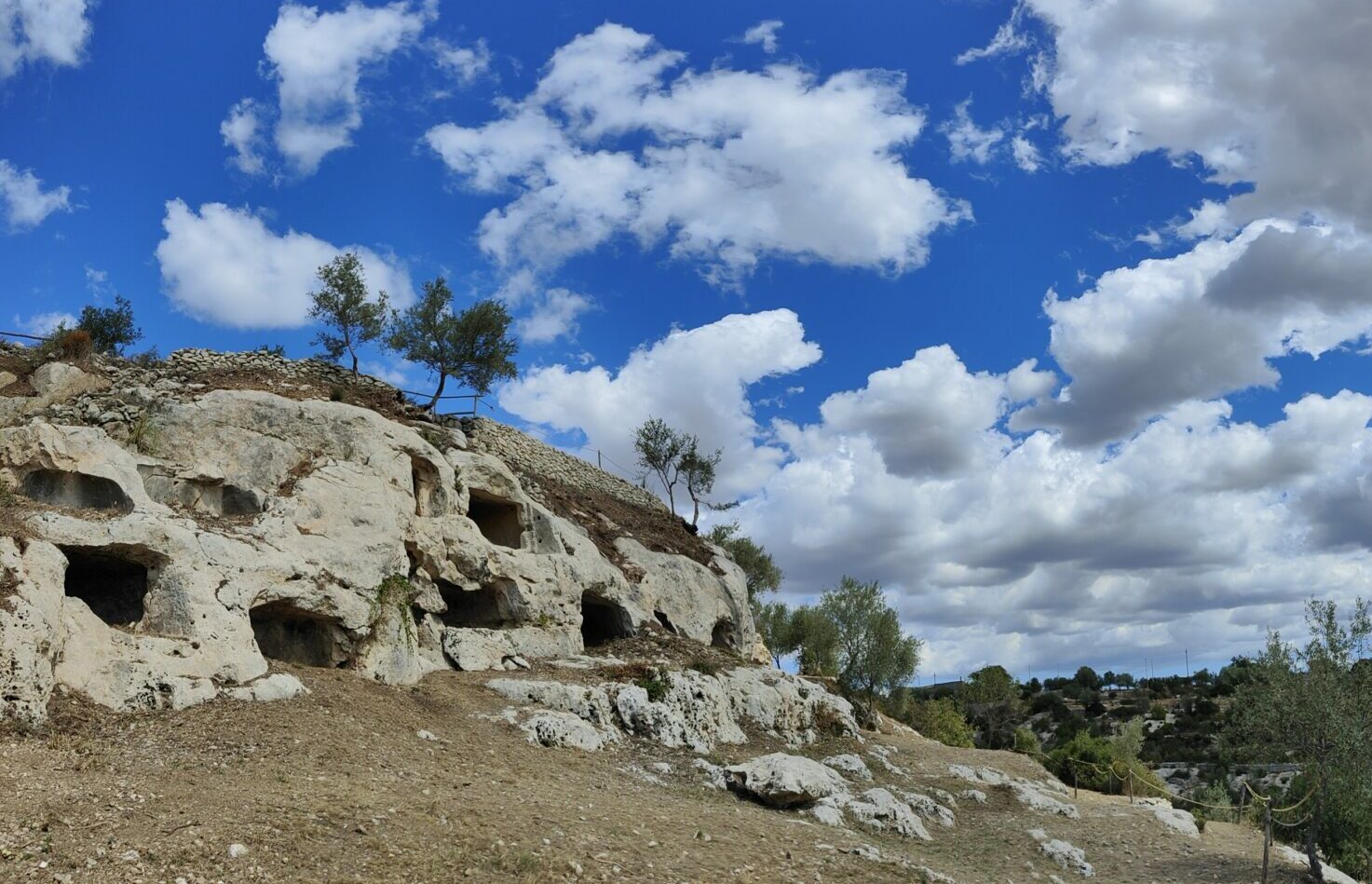The tour travels between Noto and Syracuse, exploring the millennia-old history of Jewish communities that once resided in these cities. It is a story of memory and oblivion, integration and persecution, culminating in the pivotal expulsion of Jews in 1492.
The journey begins at the northern necropolis of Ancient Noto, where, alongside rock-cut tombs from the protohistoric era, trench graves from the Greek period, late ancient hypogea, and a Christian catacomb known as the “Cave of a Hundred Mouths,” there is a small Jewish necropolis dating back to the 5th–6th century AD.
The Jewish Necropolis, consisting of a cluster of tombs close to each other, is characterized by the presence of five menorahs engraved in the local limestone, known as tuff. Two of these menorahs are carved inside a hypogeum, called the “Artichoke Cave.”
From there, the journey continues to the island of Ortygia, delving into the medieval Jewish world and its Giudecca—a network of narrow streets that has preserved its original appearance. Along the “Ruga degli Bagni,” we enter Palazzo Bianca, beneath which lies Syracuse’s only Jewish ritual bath, the so-called Miqwe.
The Miqwe of Syracuse, located 12 meters below ground level, is unique in its kind and entirely carved out of solid rock. It is the oldest Jewish ritual bath ever discovered in Europe, retaining its Byzantine appearance and serving a sacred Jewish purpose.
The walk continues to the adjacent Church of San Giovanni il Precursore (locally called San Giovannello), which was once the site of the ancient synagogue, evidenced by two tuff blocks bearing Hebrew inscriptions of immense linguistic value.
The journey concludes in the 15th-century courtyard of Palazzo Bell’omo, home to the Regional Gallery, where four tombstones with Hebrew inscriptions are preserved—traces of the medieval Jewish cemetery of the Arethusean city.

